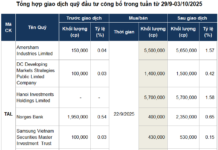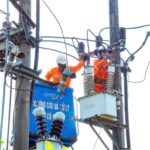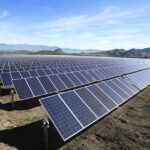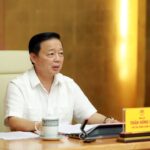The Ministry of Industry and Trade recently sent a document to ministries, sectors, and concerned parties seeking their opinions on a draft report to the Prime Minister on evaluating the implementation of the Power Development Plan VIII.
In this report, the Ministry of Industry and Trade provided a detailed progress update on major power sources. Specifically, for power sources using domestic gas and liquefied natural gas (LNG), the plan aims to achieve a total capacity of 30,424 MW by 2030.
However, only one power plant, the O Mon I Thermal Power Plant, has been put into operation so far. Two projects, Nhon Trach 3 and Nhon Trach 4, with a capacity of 1,624 MW and using LNG from the Thi Vai LNG Terminal, are currently under construction.
Except for the Nhon Trach 3 and 4 projects, which are expected to be operational by May 2025, it will be challenging for the remaining projects to be completed before 2030 without fundamental solutions and the removal of critical bottlenecks for the development of LNG-fired power plants.
The Ministry of Industry and Trade pointed out that the power system is likely to face a significant shortage of power capacity during the period of 2026-2030, posing risks to power supply security.
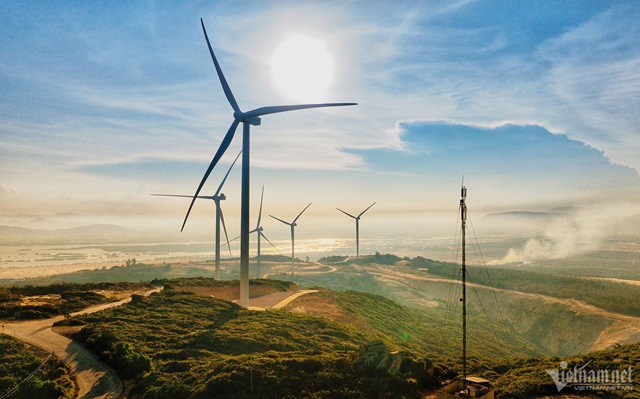 Developing wind power projects as planned is challenging. Photo: Hoang Ha
|
Regarding coal-fired power, according to the Power Development Plan VIII, the total installed capacity by 2030 will reach 30,127 MW, and coal will no longer be used for power generation by 2050. This means that from now until 2030, 3,383 MW of coal-fired power capacity needs to be put into operation, and no new coal-fired power projects will be developed after 2030 as committed.
Currently, five projects are under construction, while five others are delayed due to difficulties in changing shareholders and arranging capital. Specifically, the Cong Thanh Thermal Power Project has been approved by the Prime Minister for consideration of fuel conversion to LNG during the review of the adjusted Power Development Plan VIII. Meanwhile, the Quang Tri I Thermal Power Project has been terminated.
According to the Ministry of Industry and Trade, thermal power projects have not received consensus from local authorities and credit institutions. Therefore, the feasibility of new coal-fired power projects is not high.
As per the plan for onshore and near-shore wind power development, the total installed capacity is expected to reach 21,880 MW by 2030 and 60,050-77,050 MW by 2050. However, the total installed capacity has only reached 3,061 MW so far, making it challenging to achieve the planned capacity.
Meanwhile, no offshore wind power projects have been granted investment policies or assigned to investors, despite the targets of approximately 6,000 MW by 2030 and 70,000-91,000 MW by 2050.
Given these realities, the Ministry of Industry and Trade is considering increasing the development of solar power and researching the development of small modular nuclear reactors, including floating nuclear power plants.
Regarding nuclear power, the Power Development Plan VIII does not include the development of nuclear power sources in Vietnam. However, the Ministry of Industry and Trade believes that with the benefits and favorable conditions of small modular nuclear reactors (with a capacity of about 300 MW per unit, one-third of the capacity of traditional nuclear power reactors) and the fact that many countries are developing this type of power source, it is possible for Vietnam to consider researching the development of small modular nuclear reactors, including floating nuclear power plants, in the future.
The Ministry of Industry and Trade also affirmed that if the power sources approved in the Power Development Plan VIII do not meet the progress, power supply during 2025-2030 will be very difficult, potentially leading to electricity shortages. Therefore, the ministry proposed that the Prime Minister approve the adjustment of the Power Development Plan VIII.
Tam An
The Power of Persuasive Copy: Crafting a Compelling Headline
“The Electricity Conundrum: Navigating the Complexities of Rising and Falling Rates”
The electricity tariffs have indeed witnessed fluctuations, with consumers expressing concerns about potential price reductions. As EVN’s losses mount, the prospects for lowering rates become increasingly challenging.
The Solar Power Projects: The Deputy Prime Minister’s Directive on the Future of 154 Solar Energy Ventures.
Localities with power projects must promptly propose their inclusion in the Power Development Plan VIII upon fulfilling the conclusions of inspections, examinations, investigations, audits, and court rulings (if any).

















